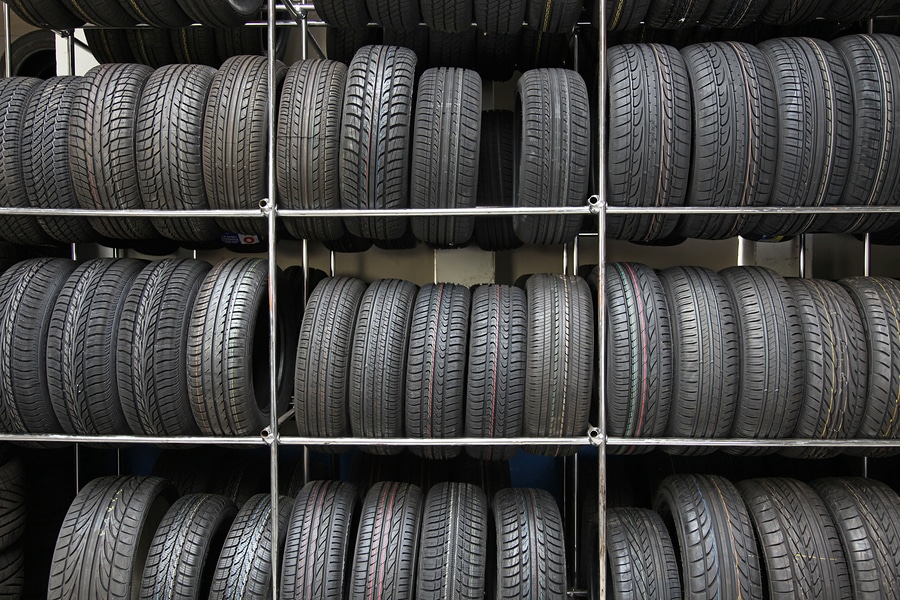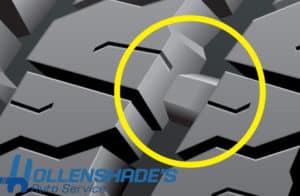
Most car owners have had to replace their tires at some point, depending on how long they’ve had them. Even if the tires are brand new, there’s a constant risk of running over a nail or a blowout on the highway. It’s essential to be aware of these possibilities and prepared to choose the new best car tires whenever you might need to do so.
What Kind of Tire is Best for My Car Mileage?
Tire life is determined by a variety of factors, including:
- Driving habits
- Elevation
- Climate
- Road conditions
- Manufacturer’s longevity estimate
The average mileage range for standard, all-season tires is 40,000 to 80,000 miles. Usually, manufacturers will estimate how long a tire should last based on their testing. It’s crucial that you know which factors you need to take into account for your individual needs. Do you drive every day? Do you take a lot of road trips or have a long daily commute? If you’re planning to put a lot of mileage on your tires, it should make a big difference in the type you buy.
If you drive long distances regularly, you’ll want to prioritize treadwear. All-season and performance tires generally last at least 65,000 miles. Tires with longer lifespans made to be more durable are an excellent choice, so you won’t have to change them regularly. Check Consumer Reports ratings for mileage estimations and consult an automotive mechanic before you buy.
How Does Rain Affect Tires?
Driving in the rain can be a scary prospect. The possibility of hydroplaning, along with vision impairment, make for a risky situation. Rain causes reduced grip and contact between tires and the road. Braking distances can double, and the ability to steer around obstacles can be affected.
If tires are older, they create even more of a hazard in rainy conditions. As tires wear, their ability to handle wet braking, have proper traction, and resist hydroplaning, will decline. In addition, rubber wears with age thus, older tires even while tread is still there will suffer worse performance in the elements.
Factors to consider in choosing tires for wet-weather driving:
- Size – A long, narrow contact patch provides more reliable handling.
- Tread pattern – Tread patterns reduce the risk of hydroplaning by channeling water.
- Tire pressure – Always make sure your tires are properly inflated, as low and too high of pressure can cause decreased traction, especially in the rain.
- Tread depth – Worn, older tires with decreased tread depth are unsafe for wet-weather driving.
When is it Time to See a Mechanic?
Tires wear down over time. Like anything else, they need to be replaced and kept up-to-date to ensure safety. If you notice any of the following things in your tires, it’s time to consult a local auto repair service:
- Sidewall cracks – The sidewall is the smooth space on the side of a tire. If there are cracks or grooves in the sidewall that are large enough to notice without searching, this may mean your tires are leaking.
- Uneven tread wear – If the tread wear on your tire looks uneven, it might mean poor wheel alignment.
- Vibration – If your car seems to be vibrating more than usual, something may be off. An out-of-balance tire can shake when the vehicle accelerates, usually starting at around 40 mph. This can also mean misaligned or unbalanced tires, or that your shock absorbers need replacing. Vibration isn’t good for tires, so have an automotive repair technician look at your vehicle immediately. Click here for more information about unusual car shaking.
- Excessive tread wear – If there’s too much wear in the center tread, your tire might be overinflated. Extra wear on the side indicates an incorrect camber angle.
- Bulges – When a tire begins to weaken, the material will sometimes bulge or extend out from the surface. These spots can result in a sudden blowout and need to be addressed quickly.
Test it:

If you think your tires might be too worn, place a quarter upside-down in the groove of your tire’s tread. If you can only see the top of George Washington’s head, you have very little treadwear left, and it’s almost time for replacements. If you conduct the same test with a penny, and can only see the top of Abraham Lincoln’s head, you urgently need new tires. In addition, federal DOT law states tire manufacturers must include a minimum tread depth indicator. Most tire manufactures set this somewhere between 2-4/32”. Europe actually has a higher tread depth standard than we do in the USA. See the image to left.
Are Winter Tires Worth It?
To put it, yes, winter tires can be worth the investment. While they are pretty much essential for specific regions, they are suitable for any car that drives predominantly in a winter climate to have.
Cold weather can be unpredictable. An overnight temperature drop can cause the pressure to decrease in your tires. This results in under inflated tires, which are a significant hazard. It’s vital to check your tire pressure at least once per month, especially during the winter. The rule-of-thumb is that the tire pressure will go down 1-3 PSI for every 10 degrees fall in ambient temperature.
While all-season tires are generally reliable, those who live in unusually cold, snowy regions will want to invest in winter tires. Winter tires have a few significant advantages, including:
- Grip – Winter tires provide more grip, which allows for better braking. This is useful during every season but especially comes in handy on icy roads.
- Easier turns – Taking corners in snowy conditions can be scary. Winter tires are more able to make turns without losing traction.
- Treads – Space between winter tire treads allows snow to be compressed into the tire. This provides better contact with the road surface.
- Sipes – The small slots in a winter tire’s tread pattern are called sipes. Sipes open as the tire comes into contact with ice, slush, and snow, and create an edge for better traction.
- Rubber – The rubber compound used in winter tires does not become stiff and brittle below 44 degrees Fahrenheit, unlike all-season and summer tires. Low temperatures lessen a tire’s grip, which can be extremely dangerous. Winter tires retain their flexibility, even in freezing conditions.
- Usefulness – Winter tires can be used in icy, snowy, or slushy conditions. They can also be used year-round, so you don’t necessarily have to change them when the seasons change.
Check out some tips on preparing your car for the cold weather months here.
When is a Good Time to Rotate My Tires?
Rotating your tires is an excellent way to even out their wear and extend their lifespans. It’s recommended that you have your tires rotated by an auto repair specialist every 5,000 to 10,000 miles.
Since front tires play a more prominent role in braking, they wear out faster. Vibrations in suspension and alignment can also cause uneven wear. Most of all, your greatest defense with uneven tire wear is regular tire rotations. These factors can affect the longevity of your tires. Spreading wear evenly around all four tires by having them rotated regularly ensures even tread depth and grip.
- Front-wheel drive – Front tires wear more quickly in a front-wheel-drive vehicle since they are responsible for steering and power. Tires should be rotated between front and rear to balance wear. Rear tires must each be moved to the opposite side of the car – the left rear becomes the right front.
- Rear-wheel drive – More balanced, a rear-wheel-drive vehicle relies on front tires for steering and rear tires for power. In this case, front tires should be moved to opposite sides in the rear – the left front becomes right rear.
- All-wheel drive – Front tires wear more rapidly in all-wheel-drive vehicles. The same process rotates them as rear-wheel-drive vehicles.
Contact Hollenshade’s for Towson Mechanical Services and Tires
When it comes to reliable mechanical services and top-quality tires in Towson, look no further than Hollenshade’s. With a commitment to exceptional automotive care and customer satisfaction, our experienced team is ready to assist you with a wide range of automotive needs. Whether you require routine maintenance, complex repairs, or tire services, our experts have you covered. Feel free to get in touch with us today to schedule an appointment or inquire about our comprehensive automotive services. At Hollenshade’s, we’re dedicated to keeping your vehicle running smoothly and ensuring your safety on the road.
